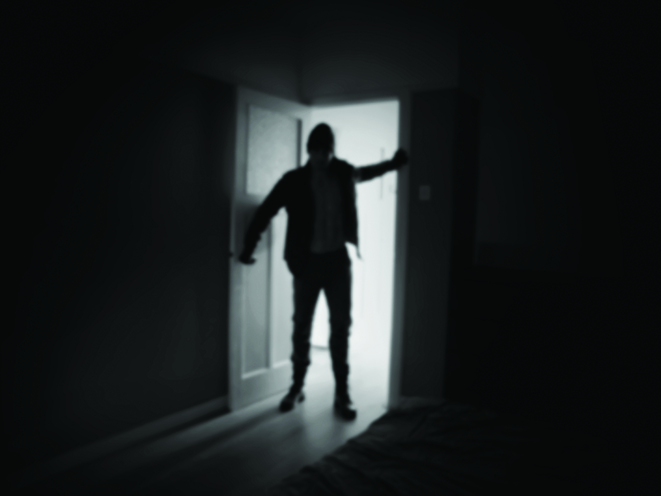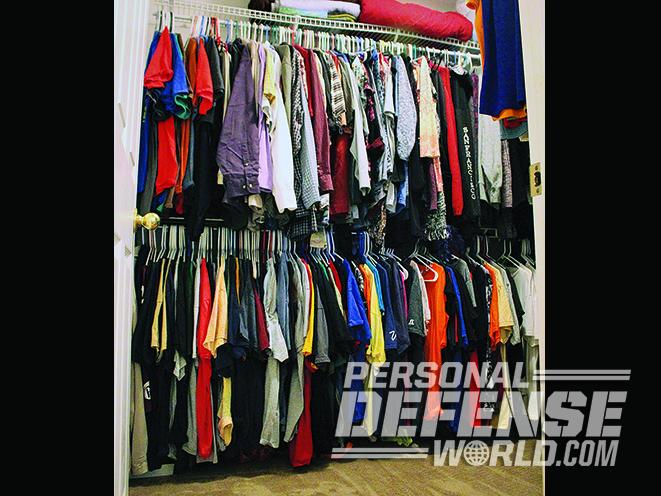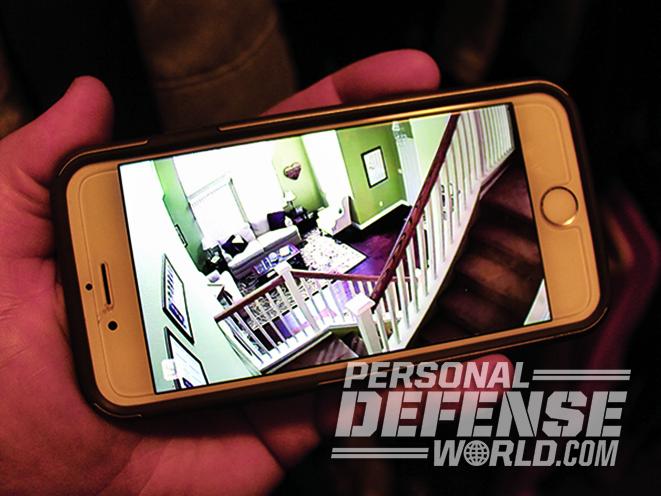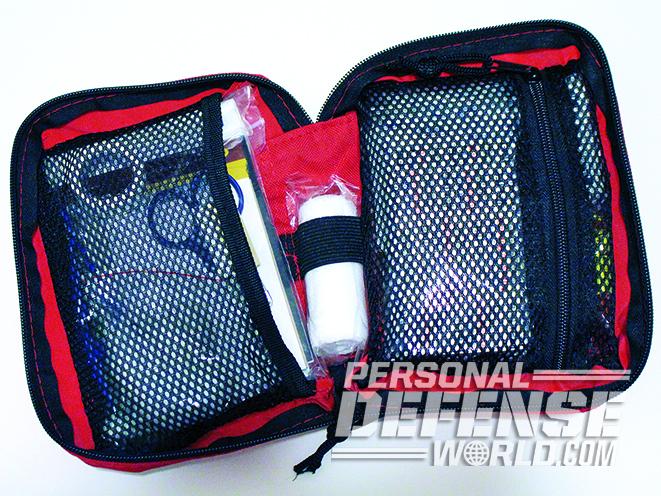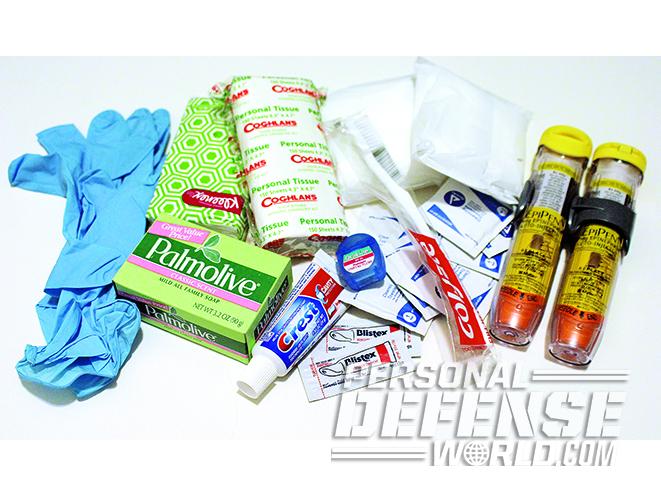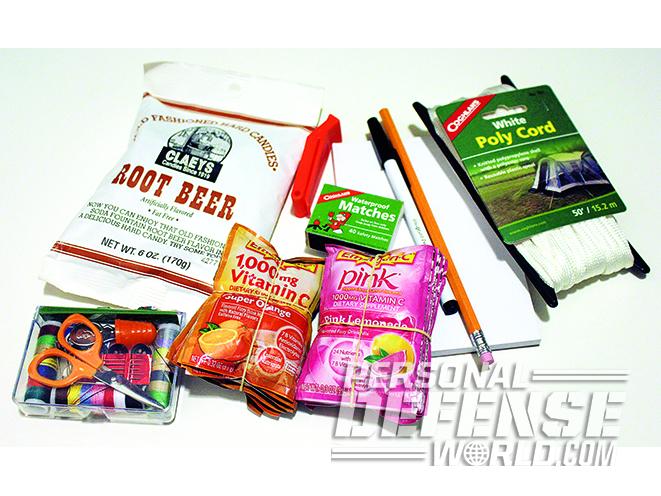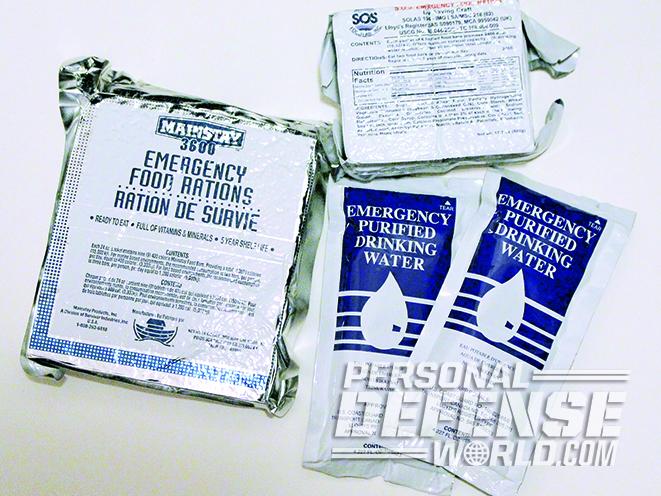You have no intention of being a victim. You have no intention of letting an intruder take advantage of you or your family. You live your life on the principles of self-defense and the protection of property and family, and there’s nothing about you that will compromise those principles. You have safeguarded your house against as many threats as you can think of, and you have reinforced all potential points of entry. You are confident that, while you investigate that bump in the night, you are prepared for what you might encounter.
However, there might be a situation where you are outmanned, outgunned and outmaneuvered, and there is a possibility you might be forced to face something you hadn’t expected. The exits are cut off. Escape is impossible, and your only option—a frontal assault on the stairs or a fighting withdrawal down a dead-end hallway—is futile. You not only have to think of your own life but those of your family, too. It’s time to retreat quickly, quietly and safely into a secure location: a safe room.
Types Of Security
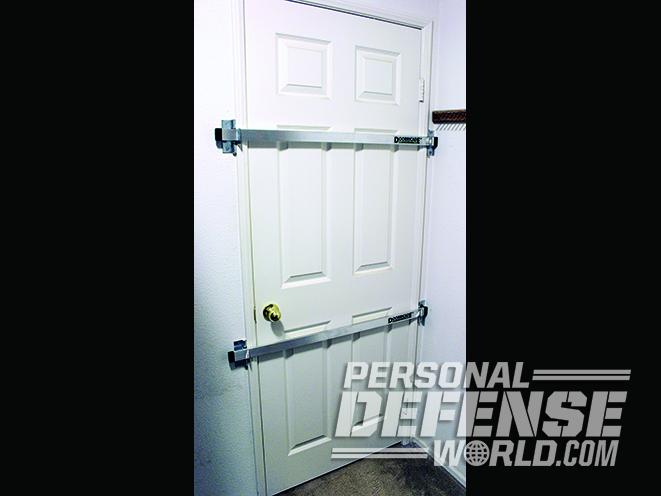
There are a few different types of safe rooms, those secure places in a residence or small business that provides a safe shelter or hiding place for the inhabitants in the event of a break-in, home invasion, tornado, terror attack or other overwhelming threat. In the wake of these increased threats, rooms dedicated to personal safety are becoming more popular.
Advertisement — Continue Reading Below
Hurricane Rooms: Many houses in the vicinity of hurricane and tornado zones have specialized rooms built into the center of them specifically to be used as a secure location to weather a severe storm. They’re constructed with fortified masonry and steel reinforcements and are equipped to keep the occupants safe during a highly dangerous weather incident. They are to be used for only up to a day or two—just long enough for the storm to pass. Therefore, they might lack any protective amenities beyond their strength, such as communications, plumbing, power or air purification, but they should be equipped with food, water and medical equipment.
- RELATED STORY: 12 Security Essentials to Prevent a Home Invasion
Panic Rooms: There are many people in the world—rich, famous, infamous or politically important—who have constructed panic rooms, usually top-of-the-line enclosures that serve no other purpose but as a location where the occupants can exist comfortably and safely for up to several weeks. They feature purified air and water sources, standalone power, security monitors, communications and a strong exterior to prevent access once closed. These rooms are to prevent kidnapping or hostage taking and are virtually impervious. They can be complicated to build, high-tech and very expensive.
Safe Rooms: On a reduced scale from the previous two, a safe room is a location to which an individual or family can retreat to avoid
contact with whatever dangerous threat is in the house. These types of rooms are very secure and can provide the occupants with a number of services to withstand a robbery or home invasion. They are easy to build into an existing room and don’t have to be intrusive to the room’s original function. The vast majority of people don’t need something so dramatic, expensive or obtrusive as a panic room, because a creatively designed safe room will suffice.
Advertisement — Continue Reading Below
A Burglar’s Prize
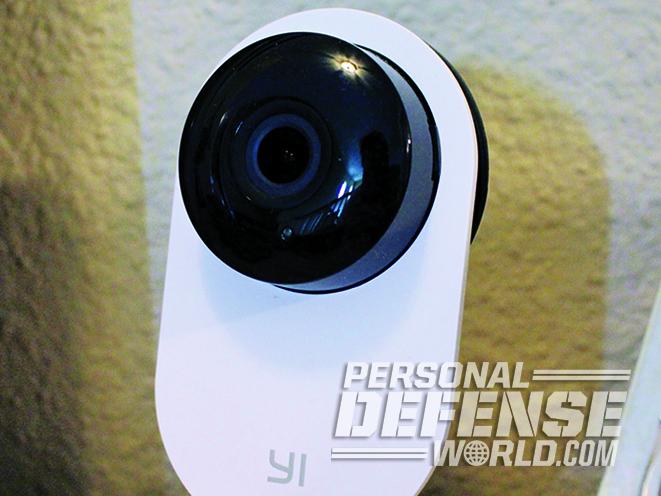
The vast number of home break-ins are for personal property. FBI statistics show that a home burglary happens in America every 15 seconds, and more than $13 billion worth of personal property is stolen each year. According to the FBI, a burglar spends on average only 10 minutes going through your home. In 2012, the University of North Carolina’s study “Understanding Decisions to Burglarize from the Offender’s Perspective,” polled nearly 500 convicted home burglars to find out what motivated them to break into houses. Of the respondents, 88 percent indicate that their “top reason for committing burglaries was related to their need to acquire drugs (51%) or money (37%)” and when asked how the income accumulated from burglaries would be spent, 64 percent reported drug use.
The odds are in your favor that a burglar is just as reluctant to encounter you in the hallway as you are to run into them. Thieves are there for a specific reason—money—and it’s not you. This is not to say the situation can’t devolve into something dangerously confrontational, as thousands of people are assaulted every year as a result of residential burglary. Planned home-invasion robberies, dependent on the occupants to provide information on safe combinations, etc., and kidnapping are on the rise.
Though a safe room built inconspicuously into another room of your house can remove you from that bodily threat, a conservatively built safe room will not protect you against all types of threats (biological, etc.). But, by augmenting a room in your house as a secure location to where you can retreat, regroup and call the authorities, and by constructing a physical barrier between you and the intruders, your odds of survival and avoiding a potentially deadly conflict will have increased dramatically.
Advertisement — Continue Reading Below
Safe Room Designs
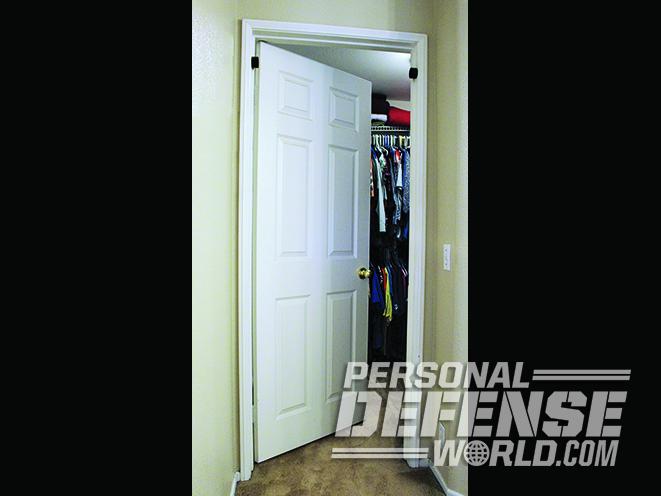
If you think of a safe room as a vault for people (it can be used to store valuables, too), it is easy to understand how you would want all six sides of that room to be insulated from attack. The best location for a safe room is on the lowest floor in your house, such as a basement or the ground floor. And it should be built into an interior room—a room that doesn’t share a wall with the outside. Since closets and bathrooms usually don’t need windows, architects place these rooms toward the center of the house. An interior room provides yet another layer of defense from the intruder.
Since a safe room is designed to hide people, it is a good idea—if you have the space in your house—to create an invisible room, or one without a traditional door or lacking any discernable entry point. Bookcase entries, hidden pocket doors or doors behind moveable furniture will hide the entrance. If you can’t go the expense or inconvenience of dedicating an entire room to your safe room idea, instead incorporate one inconspicuously into an existing room, like a closet or a “guest” bathroom. These two rooms, specifically, are rarely searched by burglars, are infrequently used and usually will have extra storage.
If you haven’t opted for a hidden door (or can’t afford one), you’ll want one that doesn’t scream “hiding place,” one that can be in plain sight and look like every other door in your house. Since the door is the weakest point of any room, fortifying it to prevent access is paramount. Most doors found in the interior of a home are hollow in construction and can be kicked in with considerable ease. Fortunately, many home supply stores have solid-core doors for sale that will be exactly the same style as your other doors. Consider deadbolts, upgraded steel doorjambs, barricade bars, reinforced hinge screws and even a steel door. This is your first line of defense, so it should be your best.
Advertisement — Continue Reading Below
Most dedicated panic rooms don’t have keys (they get lost or copied) but instead feature high-tech fingerprint scanners or keypads. For a DIY safe room, having a retinal scanner on your closet door might be conspicuous to burglars and defeats the point of blending in with the rest of the house, not to mention cost prohibitive.
What It Needs
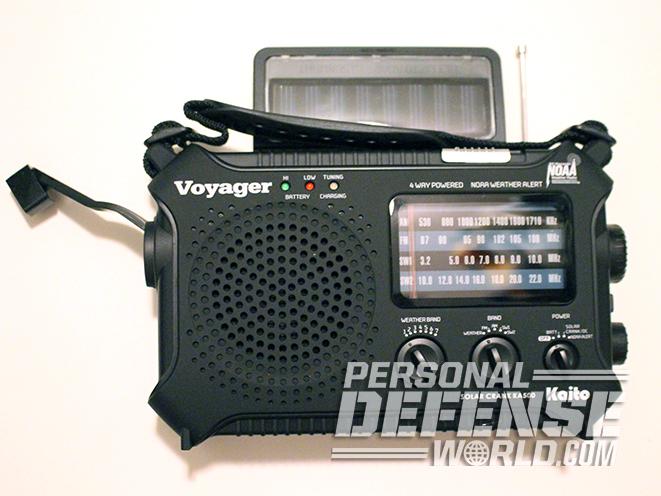
Being holed up in a room for 10 minutes while burglars are ransacking your house, or for 10 days during a domestic emergency that makes going outside dangerous, can be made so much more comfortable with a few safe room features. Some are very necessary, but this is where you can get a little crazy and spend thousands of dollars renovating the room to be able to ward off anything that is thrown at it. Instead, take into consideration what the biggest threat could be and design your needs around that with these ideas in mind.
Communications: Keeping tabs with the outside world is important. Having a working cell phone, a CB or ham radio, a hardline telephone, an intercom (in case you want to speak to whoever’s in your house) or an alarm button wired directly to the police or security company are all good ideas. Whatever you decide on, make sure it can’t be controlled by the intruders.
Advertisement — Continue Reading Below
It is important to contact the authorities and apprise them of the situation, so you’ll want to keep an open line of communication regardless of what is going on in the house. A cell phone is the best bet (but make sure your safe room won’t block the signal). Consider wiring an outlet into your safe room so that you can recharge any devices.
Surveillance: Observing the movements of the threats in your house is paramount as well. You’ll need to know what the intruders are doing, where they are in relation to you and when/if they’ve left so you know it is safe to come out.
Spending a small fortune on a series of surveillance cameras and a bank of monitors to watch every corner of your house is superfluous, expensive and can be turned off easily by cutting the power if your intruders are in your house for the long haul. Instead, invest in a couple of battery-operated cameras pointed at key access points of your house and a cell phone to stream the feed. But consider having your neighbor’s Wi-Fi information so if the power does get cut, you won’t lose the feed.
Advertisement — Continue Reading Below
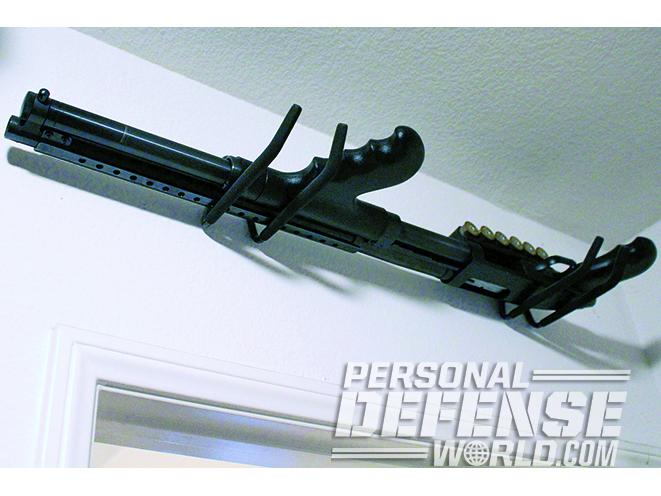
Power & Air: A DIY safe room in the suburbs will not be a temperature-controlled, airtight panic room like those shown in movies. The odds of being smoked out of your safe room or having a biological agent pumped in underneath the door are extremely remote. However, that isn’t to say you can’t include an air filtration system that feeds directly from the outside and a dedicated source of electrical power not connected to your home’s panel. The odds are against it, but the threat may be biological or nuclear, and you may want to plan for all emergencies.
Defense: If the burglars are intent on reaching you, your safe room might just turn into a last-stand situation. Or some circumstance may cause you to need to evacuate your safe room and you’ll need to defend yourself on the way out and once you get outside. Having a small arsenal of weapons handy will increase your odds against equally armed intruders. With an ample supply of shells, a shotgun is one of the best in-home defense weapons, but also consider handguns, knives and clubs.
- RELATED STORY: In Plain Sight – Installing An Air Vent Wall Safe
Supplies: You can never predict how long you’ll be forced to utilize your safe room, so having it well stocked for the long haul is a good idea. Keep in mind your specific needs and be flexible about including supplies for two hours or two weeks: You may not need food today or tomorrow, but in five or six days you’ll wish you had stocked anything edible. Water and nonperishable foods are a must, as is a flashlight, extra batteries, sanitation supplies, blankets, a first-aid kit and clothing as well as specialized medication like EpiPens and personal medication for your group.
Advertisement — Continue Reading Below
If you feel you might use your safe room during a chemical, biological, or nuclear attack, consider gas masks, potassium-iodine tablets, and even particulate masks for dust. You may wish to keep copies of important documents, family papers, cash and credit cards.
In the end, how well you prepare beforehand can determine how long you’ll last in the event of a home invasion. Take the time now to take stock of your situation and determine the best route for you. You and your family will certainly be grateful in a time of need.
Advertisement — Continue Reading Below
